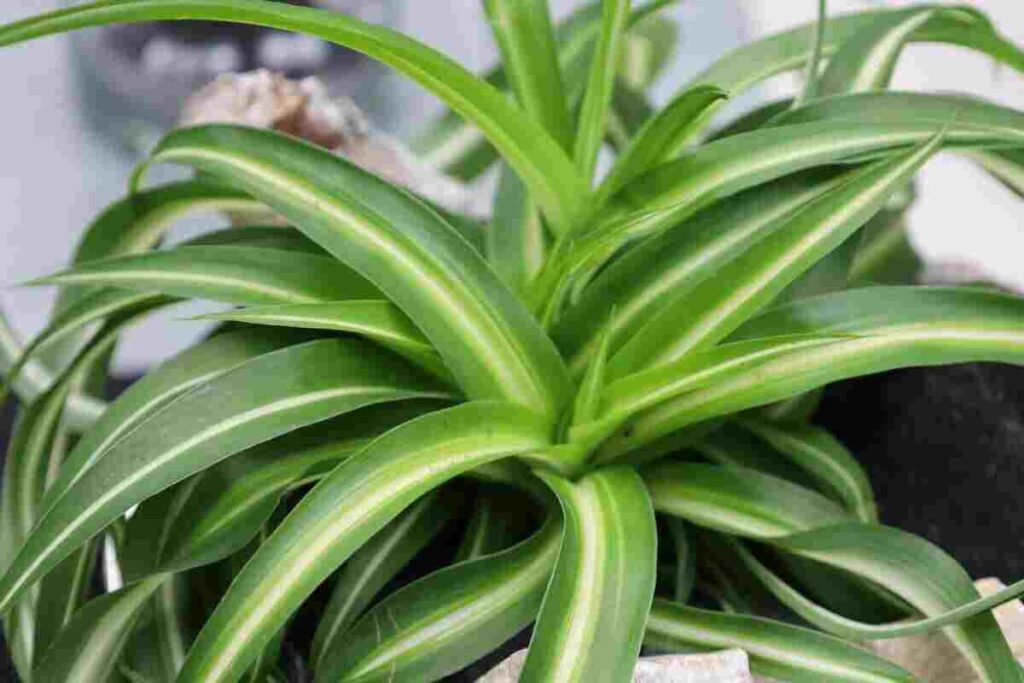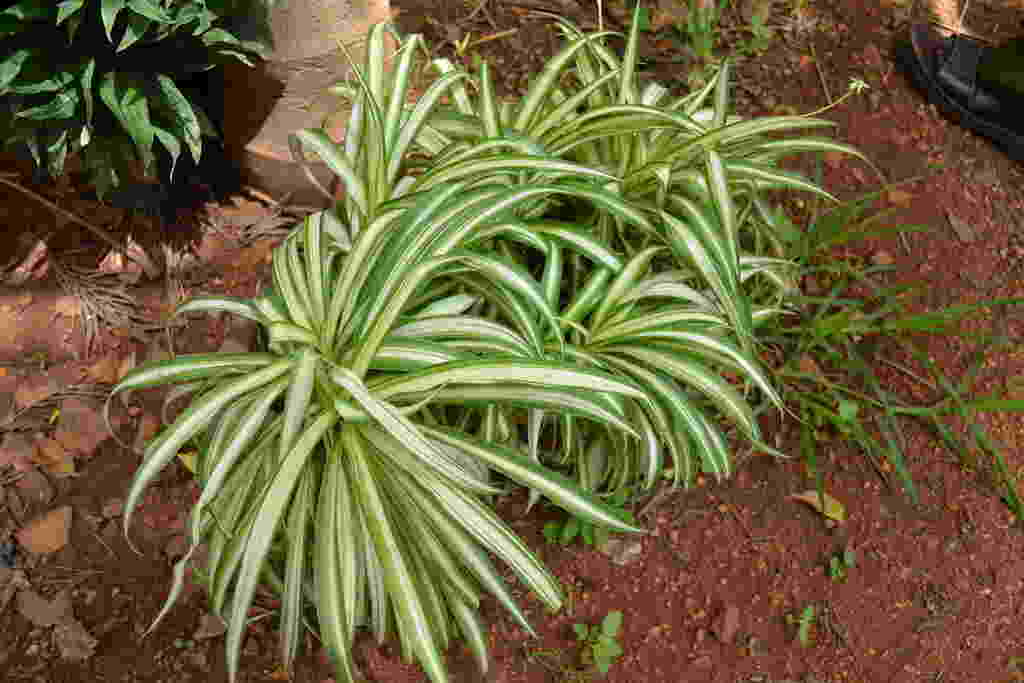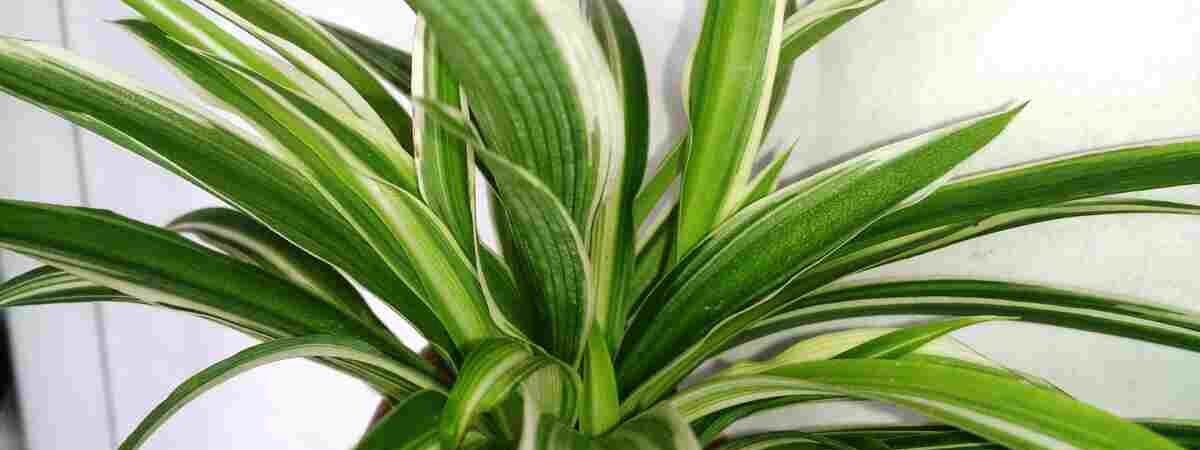Spider plants, also known as Chlorophytum comosum, are popular houseplants due to their ability to thrive in a wide range of conditions and their unique appearance. They are also relatively easy to care for, making them an ideal choice for novice plant owners.
In this comprehensive guide, we will cover everything you need to know to grow and care for spider plants, including their origins, ideal growing conditions, watering and fertilization needs, and common issues that may arise.
Plant Overview
spider plant,is otherwise called a “spiderette” or “airplane plant. Or scientifically called as Chlorophytum comosum are popular houseplants that are known for their long, slender leaves that arch gracefully and produce small plantlets at the ends. These plantlets, also known as spiderettes, can be potted to propagate the plant or left to dangle from the parent plant.
These are easy to care for and are tolerant of a wide range of growing conditions. They prefer to grow in bright, indirect light and moist, well-draining soil. They can be grown in pots or hanging baskets, and they are often used to add a touch of green to indoor spaces.
In addition to their attractive foliage, spider plants are also known for their air-purifying abilities. They are able to remove harmful pollutants such as formaldehyde and xylene from the air, making them a great choice for homes and offices.
Overall, These are low-maintenance and versatile plants that can be enjoyed by both beginner and experienced plant enthusiasts.
Brief description of the benefits of growing Spider plants
Spider plants (Chlorophytum comosum) offer several benefits when grown as houseplants, including:
Air-purifying
These are known for their ability to purify the air by removing harmful pollutants such as formaldehyde, benzene, and xylene. This makes them a great addition to homes and offices.
Low maintenance
Spider plants are very easy to care for and require minimal attention. They can tolerate a range of growing conditions and are resistant to many pests and diseases.
Decorative
These have long, slender leaves that can add a touch of greenery to any room. They are available in a range of varieties, including solid green, variegated, and curly.
Propagation
Spider plants produce small plantlets, also known as spiderettes, that can be easily propagated to create new plants. This propagating feature makes them a great choice for beginner gardeners.
Safe for pets
These are non-toxic to cats and dogs, making them a safe choice for pet owners who want to add some greenery to their homes.
Overall, These are versatile and beneficial houseplants that can provide a range of benefits to those who choose to grow them.
Types of Spider plants

There are several different types of spider plants (Chlorophytum comosum) that can be grown as houseplants. Following are some of the most common varieties:
Variegated spider plant
This is the most common type of plant, with green and white striped leaves. It is a very hardy and easy-to-care-for plant that can thrive in a range of conditions.
Solid green spider plant
This variety has solid green leaves without any variegation. It is less common than the variegated type but is still a popular choice among plant enthusiasts.
Curly spider plant
This variety has curly or wavy leaves, giving it a unique appearance. It is a bit more sensitive to light than other types of spider plants and may need to be kept in indirect light.
Reverse variegated spider plant
This type has green leaves with white margins, giving it a reverse variegation pattern. It is a bit more delicate than the other varieties and may require more attention to thrive.
Bonnie spider plant
This variety has thick, curly leaves and a compact growth habit. It is a great choice for small spaces or for those who prefer a more compact plant.
How to plant Spider plants
Here are the steps to plant spider plants (Chlorophytum comosum):
Choose a container
It can be planted in any container with drainage holes. Choose a pot that is at least 6-8 inches in diameter and has drainage holes in the bottom.
Prepare the soil
It prefer well-draining soil. Mix equal parts of potting soil, perlite, and peat moss to create a well-draining soil mix.
Plant the spider plant
Fill the container with the soil mix and create a small hole in the center of the soil. Place this plant into the hole and backfill with soil, ensuring that the plant is at the same depth it was in its previous pot.
Water the plant
After planting, water the spider plant thoroughly until water runs out the bottom of the pot. Allow the soil to dry out slightly before watering again.
Provide proper light
They prefer bright, indirect light. Avoid placing them in direct sunlight, as this can scorch the leaves.
Maintain proper humidity
Spider plants prefer a slightly humid environment. Mist the leaves occasionally with water or place a tray of water near the plant to increase humidity.
Propagate the plant
They produce small plantlets, or spiderettes, at the ends of long stems. These can be propagated by cutting the stem and planting the spiderette in soil.
Overall, these are easy to plant and care for, making them a great choice for beginner gardeners. With proper care and attention, spider plants can thrive and add a touch of green to any indoor space.
How to Care for Spider plants

Light
Spider plants (Chlorophytum comosum) prefer bright, indirect light. They can tolerate some direct sunlight, but too much can scorch their leaves. Ideally, they should be placed near a window that receives bright, filtered light throughout the day.
If your plant is not getting enough light, you may notice that its leaves are turning yellow or brown. On the other hand, if it is getting too much light, the leaves may become pale or bleached-looking.
If you need to supplement the light in your home, you can use artificial lights such as fluorescent or LED grow lights to provide the plant with the right amount of light it needs to thrive.
Temperature
Spider plants (Chlorophytum comosum) are relatively adaptable to a range of temperatures, but they prefer moderate temperatures between 60-75°F (15-24°C). They can tolerate temperatures as low as 50°F (10°C) for short periods, but prolonged exposure to cold temperatures can cause damage to the plant.
Similarly, they can tolerate temperatures up to 90°F (32°C) for short periods, but high temperatures and low humidity can cause the leaves to wilt and dry out. In general, spider plants prefer consistent temperatures and do not respond well to sudden temperature changes or drafts.
It’s also important to keep them away from heaters or air conditioning units that can create hot or cold spots in the room. By providing your spider plant with moderate temperatures and avoiding sudden fluctuations, you can help ensure its health and vitality.
Humidity
Spider plants (Chlorophytum comosum) prefer a moderate to high humidity level. They can tolerate lower humidity levels, but they may develop brown leaf tips or become more susceptible to pests if the air is too dry.
To increase humidity around your spider plant, you can mist the leaves with water or place a tray of water near the plant. You can also group plants together, which will create a microclimate of higher humidity.
Another option is to use a humidifier in the room where the spider plant is located, especially during the dry winter months when indoor heating can cause the air to become very dry. By providing your spider plant with adequate humidity, you can help ensure that it remains healthy and vibrant.
Soil
Spider plants (Chlorophytum comosum) prefer well-draining soil that is rich in organic matter. A good potting mix for spider plants should be able to retain moisture while also allowing excess water to drain away easily.
A typical spider plant potting mix can be made by combining equal parts of peat moss, perlite, and potting soil. You can also add a small amount of sand or vermiculite to improve drainage.
It’s important to avoid using heavy, clay-based soils or soils that retain too much water, as these can cause root rot and other problems for the plant. When selecting a pot for your spider plant, make sure it has drainage holes to allow excess water to escape.
This will help prevent waterlogging and ensure that your spider plant’s roots have adequate oxygen. With the right soil and potting mix, your spider plant can thrive and grow into a healthy, vibrant plant.
Water
Spider plants (Chlorophytum comosum) prefer to be kept evenly moist, but they do not like to be overwatered. Overwatering may cause root rot, which will be fatal for the plant. As a general rule, it’s best to water your spider plant when the top inch of soil feels dry to the touch.
You can water your plant thoroughly, by allowing the water to drain out of the bottom of the pot. Make sure to discard any excess water that has collected in the saucer, as leaving the plant sitting in standing water can also lead to root rot.
In general, spider plants require more frequent watering during the spring and summer months when they are actively growing, and less frequent watering during the fall and winter when growth slows down.
It’s also important to note that spider plants are relatively forgiving if you accidentally forget to water them for a few days, as they can tolerate short periods of drought. By providing your spider plant with consistent, even moisture, you can help ensure its health and vitality.
Fertilizer
Spider plants (Chlorophytum comosum) benefit from regular fertilization, especially during the active growing season. A balanced, water-soluble fertilizer with a ratio of 10-10-10 or 20-20-20 can be used once a month during the spring and summer months.
It’s important to follow the manufacturer’s instructions for mixing and applying the fertilizer, as over-fertilization can damage the plant. During the fall and winter months, when the plant is not actively growing, you can reduce the frequency of fertilization to once every two or three months.
It’s also important to note that spider plants can be sensitive to fluoride, so it’s best to use a fertilizer that is specifically labeled as fluoride-free. Another option is to use organic fertilizers such as compost or worm castings, which can provide a slow-release source of nutrients to the plant.
By providing your spider plant with regular, balanced fertilization, you can help ensure its health and encourage robust growth.
How to prune for Spider plants?
Pruning spider plants (Chlorophytum comosum) is not usually necessary, as they tend to grow into a bushy, attractive shape on their own. However, if your spider plant is becoming too large or overgrown, you can prune it back to keep it within bounds. Here are some tips for pruning your spider plant:
- Use clean, sharp scissors or pruning shears to make your cuts. This will help prevent damage to the plant.
- Identify the stems or leaves that you want to remove. Look for stems that are too long or leaves that are yellowing or brown.
- Cut the stem or leaf off as close to the base of the plant as possible. Be careful not to damage any of the healthy leaves or stems while cutting.
- If you are pruning to reduce the size of the plant, make your cuts just above a node or a set of leaves. It will surely encourage the plant to branch out and become fuller.
- After pruning, make sure to clean up any debris or dead leaves from around the plant. it will help the plant to prevent the spread of pests or diseases.
By pruning your spider plant when necessary, you can help keep it healthy and attractive. However, be careful not to over-prune, as this can weaken the plant and make it more susceptible to pests and disease.
Common pests and diseases
Spider plants (Chlorophytum comosum) are generally considered to be relatively pest and disease resistant. However, like any houseplant, they can still be affected by a few common issues. Here are some of the most common pests and diseases that can affect spider plants:
Spider mites
These tiny pests can cause yellowing or speckling of the leaves. Spider mites can be controlled with a miticide spray or by washing the leaves with a mild soap solution.
Mealybugs
These soft-bodied insects can cause white, cottony spots on the leaves and stems. Mealybugs can be removed by wiping them off with a cotton swab dipped in rubbing alcohol.
Scale insects
These insects can cause yellowing of the leaves and a sticky residue on the plant. Scale can be treated with insecticidal soap or horticultural oil.
Root rot
Overwatering or poor drainage can cause root rot, which can lead to yellowing leaves, wilting, and eventual death of the plant. To prevent root rot, make sure your spider plant is planted in well-draining soil and that excess water is allowed to drain away from the roots.
Leaf tip burn
This condition can be caused by dry air, underwatering, or over-fertilization. To prevent leaf tip burn, make sure your spider plant is kept in a humid environment, watered regularly but not overwatered, and fertilized according to the manufacturer’s instructions.
By keeping an eye out for these common pests and diseases and taking steps to prevent them, you can help ensure the health and vitality of your spider plant.
Conclusion
Spider plants are a great choice for houseplant enthusiasts due to their unique appearance and easy-care requirements. By following the tips outlined in this guide, you can successfully grow and care for your spider plant, ensuring that it remains healthy and vibrant for years to come.
You may also like to read
Potting Mix: How to Make Your Own Soil for Healthier, Happier Plants
How to Grow Ice Queen Lettuce That’s Both Beautiful and Delicious






